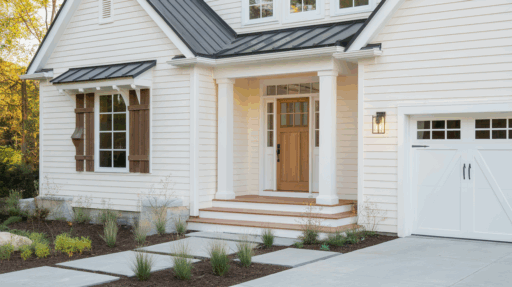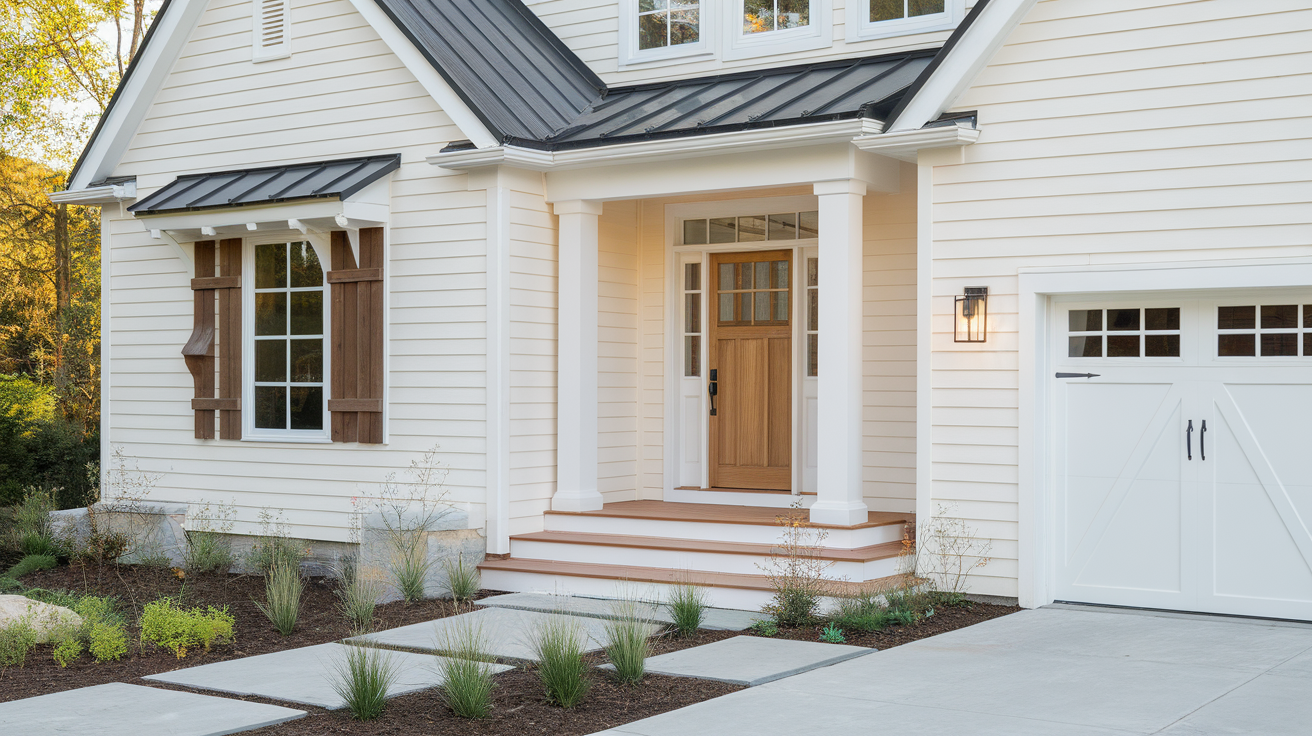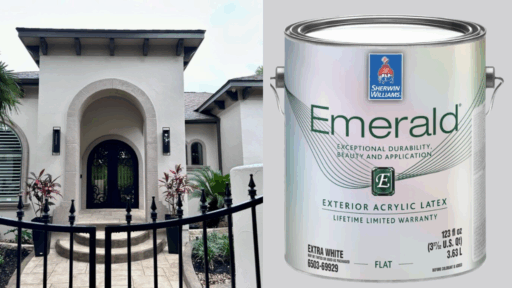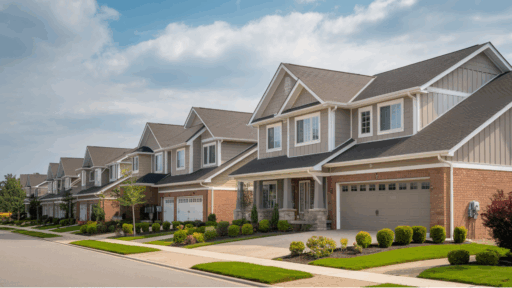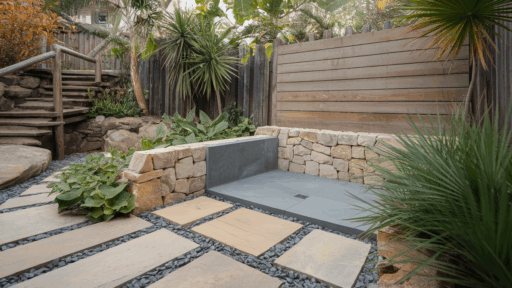Choosing the right exterior paint finish can make a significant difference in how your home looks and lasts.
Satin and semi-gloss are two common picks, and I’ve used both on different projects.
Satin has a soft, smooth look that’s great for siding and garage doors.
Semi-gloss is shinier and more durable, making it ideal for use on trim, doors, and high-traffic areas.
Not sure which one to use? I’ll go over the key differences, look, durability, cost, and where each works best. By the end, you’ll know which finish fits your project.
Understanding Paint Finishes
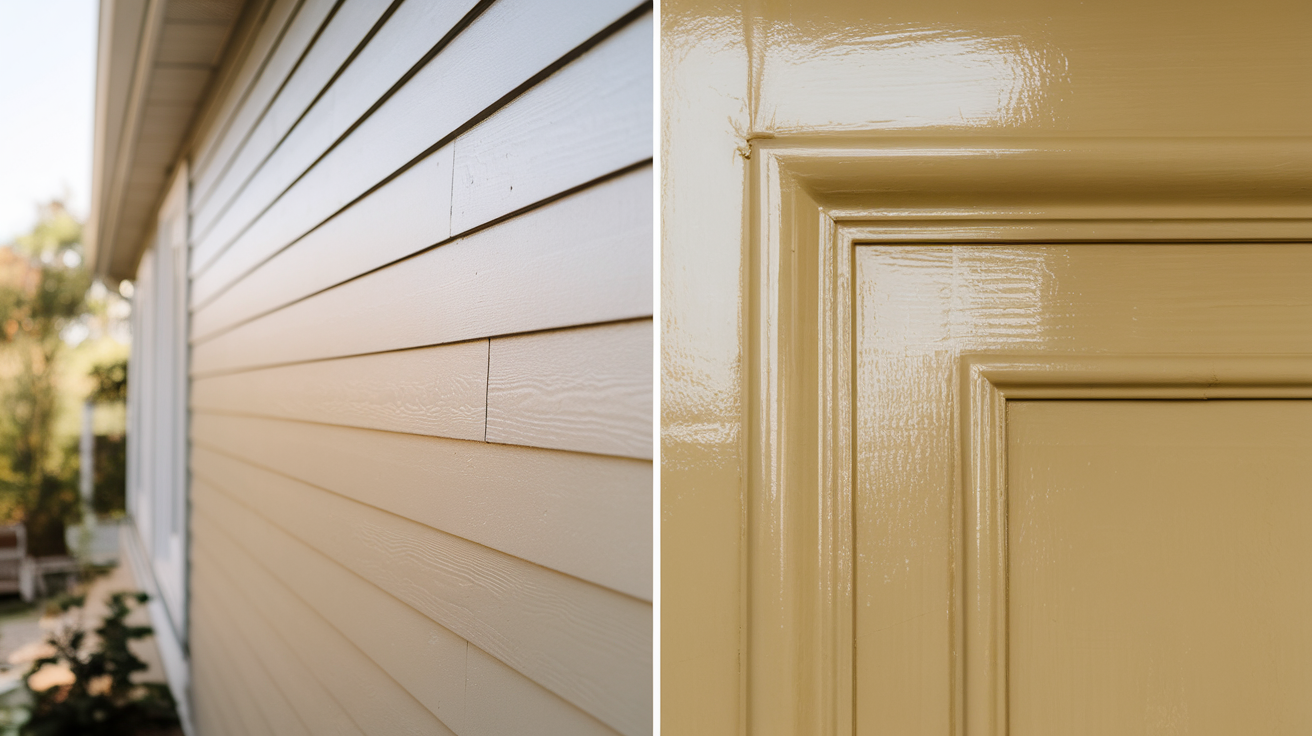
Understanding the different types of finishes is helpful when picking exterior paint. Two common choices are satin and semi-gloss.
What Is Satin Paint
Satin paint has a soft, smooth look with a little bit of shine. It’s not too dull, but not too shiny either.
Satin finishes reflect light gently, which helps hide small bumps or marks on the surface.
This makes it a good option for large areas like siding, stucco, or garage doors. It also holds up well outdoors and is pretty easy to clean if it gets dirty.
What Is Semi-Gloss Paint
Semi-gloss paint has a shinier, more reflective finish. It stands out more and adds a nice touch to trim, doors, and railings. It also shows off details and gives a strong contrast.
Semi-gloss is very strong and resists moisture, so it works well in areas that are frequently touched or exposed to water.
Satin vs. Semi-Gloss: Key Differences
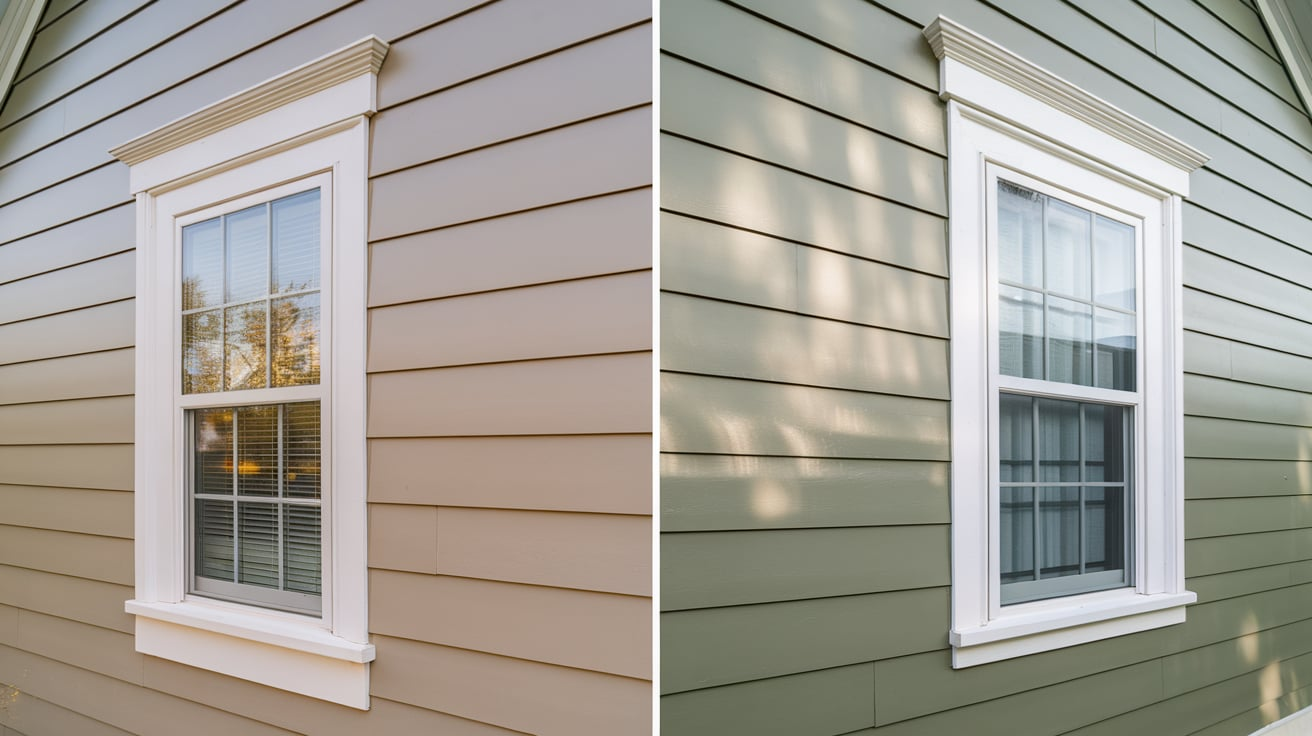
When deciding between satin and semi-gloss paint for your home’s exterior, it helps to know how they look, how strong they are, and where they work best.
1. Appearance and Look
Satin paint has a soft, smooth finish that looks neat without being too shiny. It’s great for large surfaces because it gives a clean look and helps hide small flaws.
Satin also has a more gentle, flat feel that blends well with natural outdoor spaces.
Semi-gloss paint is shinier and reflects more light. It makes trim, doors, and edges stand out.
But it can also show scratches or bumps more easily. If you want parts of your home to catch the eye, semi-gloss will help them pop.
2. Strength and Cleaning
Semi-gloss is strong and holds up well in busy or wet areas.
It’s great for spots that get touched frequently or need frequent cleaning. The smooth finish makes dirt and water wipe off more easily.
Satin is also strong, but it’s a little softer and may show scuffs more.
It still cleans well, but needs a gentler touch. It works nicely for areas that don’t get too messy or are constantly touched.
3. Best Places to Use Each
Satin is a good pick for siding, brick, stucco, garage doors, shutters, and soffits.
It gives a clean, even look that makes the outside of your home feel calm and neat.
Semi-gloss works best on front doors, trim around windows and doors, railings, gutters, and downspouts.
These areas need more strength and are great spots to add some shine.
Each finish has its place, so think about the surface and how much use or weather it will get. Matching the finish to the job helps your paint last longer and look better.
Satin vs. Semi-Gloss: Pros and Cons
Not sure which finish is right for your home’s exterior? This quick comparison breaks down the strengths and weaknesses of satin and semi-gloss paint.
| Finish | Pros | Cons |
|---|---|---|
| Satin | – Hides small surface flaws well- Soft, smooth look- Cleans up easily and works on most outdoor surfaces | – Not as strong in busy areas- Less shine means less visual impact |
| Semi-Gloss | – Shiny finish highlights trim and details- Very strong in tough weather- Resists moisture, sun, and fading | – Shows dents, bumps, and rough spots- Can look too shiny on large walls or siding |
Satin vs. Semi-Gloss: Cost Considerations
Cost plays a significant role when planning an exterior paint job, especially for large homes or those with tight budgets. A simple breakdown of how satin and semi-gloss finishes compare when it comes to price and value:
- Semi-gloss paint usually costs more because it contains more resin.
- More resin means better durability, stronger adhesion, and better protection from sun, water, and wear.
- That extra shine also comes from resin, which adds to the price.
- Semi-gloss is ideal for trim, doors, and high-traffic areas where strength matters most.
- Satin paint is often more affordable, making it a good choice for covering large surfaces.
- Satin still offers decent durability and a soft, smooth finish with a quieter shine.
- Choose satin for siding or wide walls if you want to save money but still get solid results.
How Weather Affects Your Paint Finish

The weather in your area can help you decide between satin and semi-gloss. Each finish reacts differently to sun, rain, and humidity.
- Semi-gloss is great for wet or humid places. It repels water, resists mildew, and wipes clean easily, perfect for trim, doors, and high-use areas.
- Satin works well in dry or sunny spots. It holds up nicely on large areas like siding or stucco and doesn’t reflect as much light, which helps in bright sun.
Think about your local climate before choosing. The right finish for your weather can help your paint job last longer and look better.
Expert Recommendations
Most painters recommend using both satin and semi-gloss finishes for the outside of your home, depending on the surface.
Each finish works better in certain areas. When used the right way, they help your home look clean and stay protected for years.
Use satin for large areas like siding, stucco, brick walls, garage doors, and soffits.
Satin has a smooth, soft finish with low shine. It hides small flaws and doesn’t draw too much attention. It also holds up well outdoors and is easier to touch up if needed.Use semi-gloss on trim and details like front doors, shutters, window frames, railings, gutters, and downspouts.
Semi-gloss has more shine, so it highlights these features and gives them a crisp, finished look. It’s also tougher and easier to clean—great for high-use or weather-exposed spots.
Painters often mix the two: satin for main surfaces and semi-gloss for accents. This gives your home a balanced, polished look that lasts
Conclusion
Choosing between satin and semi-gloss exterior paint depends on the area you’re painting and the look you want. Satin paint works best on big areas like siding, stucco, or brick.
It hides small flaws and gives a smooth, soft finish. Semi-gloss paint is better for trim, doors, and other details. It’s shiny, strong, and easy to clean, which makes it perfect for places that get touched a lot or face more weather.
Both finishes have advantages and disadvantages, and sometimes, the best choice is to use a mix—satin for the main areas and semi-gloss for the trim.
Also, consider your local weather and how much cleaning or care you’re okay with.
By understanding the differences, you’ll be able to pick the right paint for your home’s exterior and get a finish that looks nice and lasts longer.

